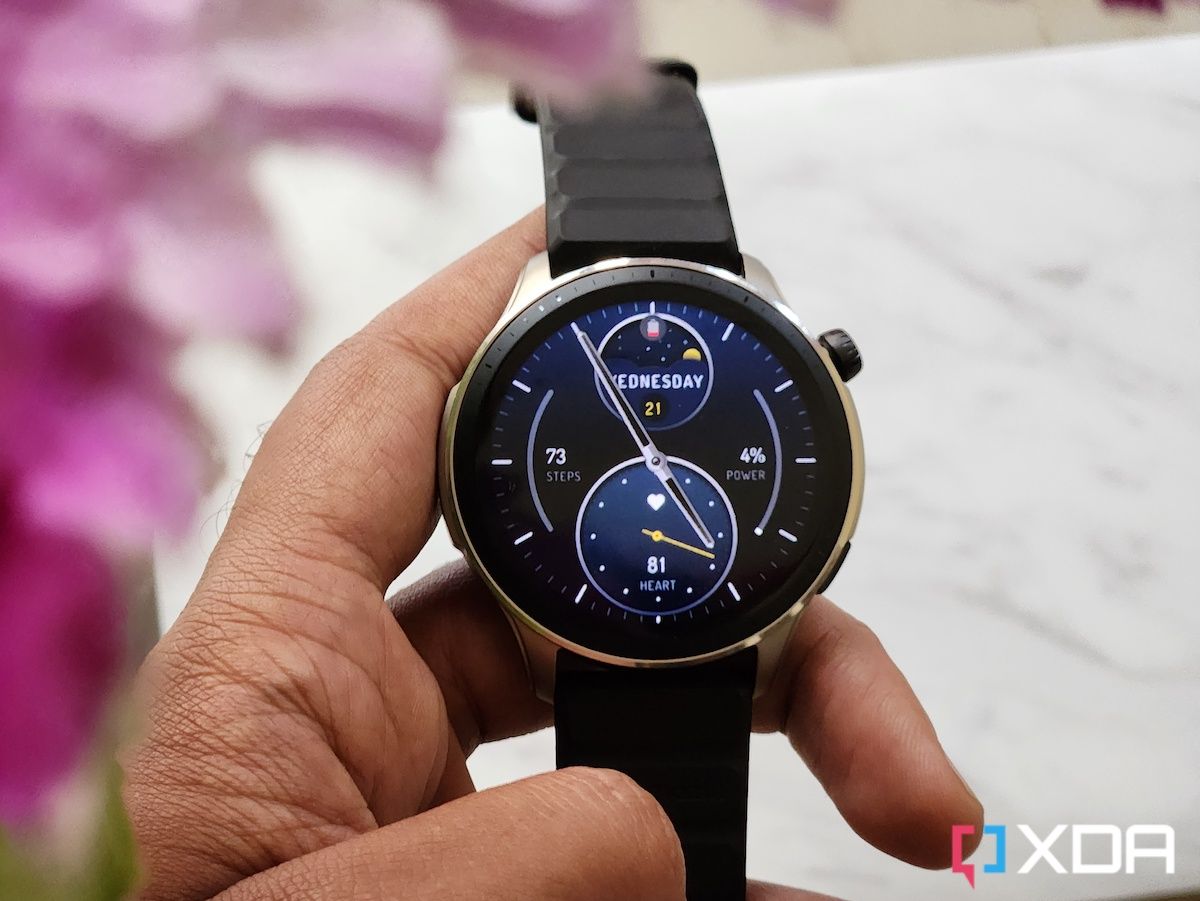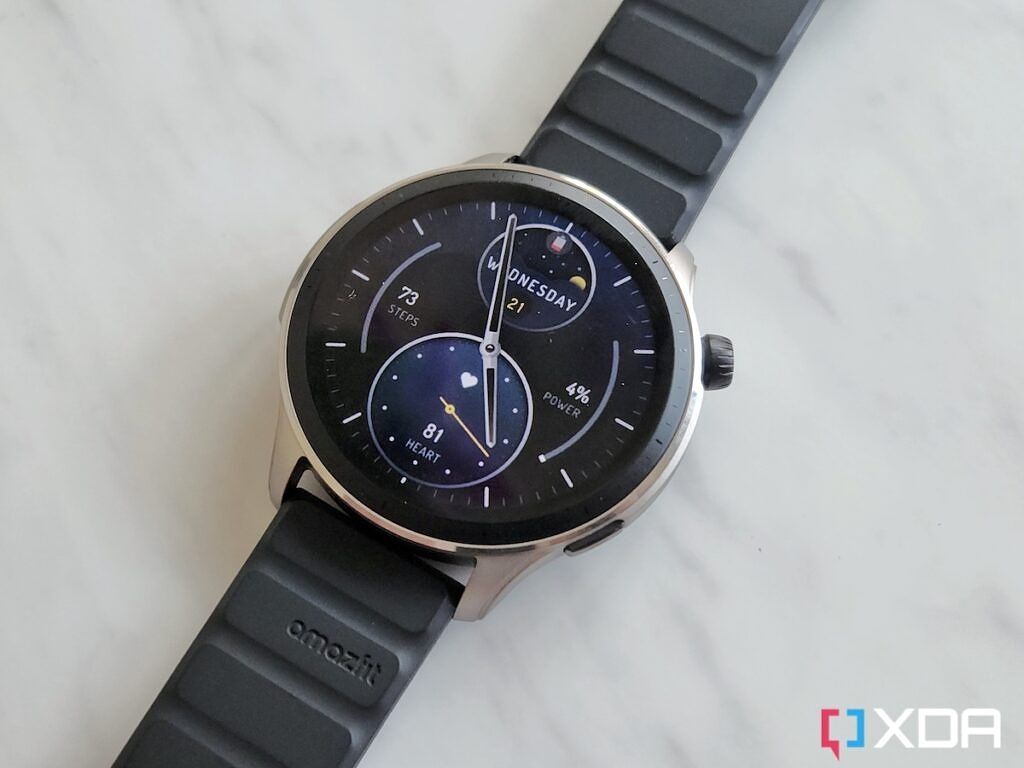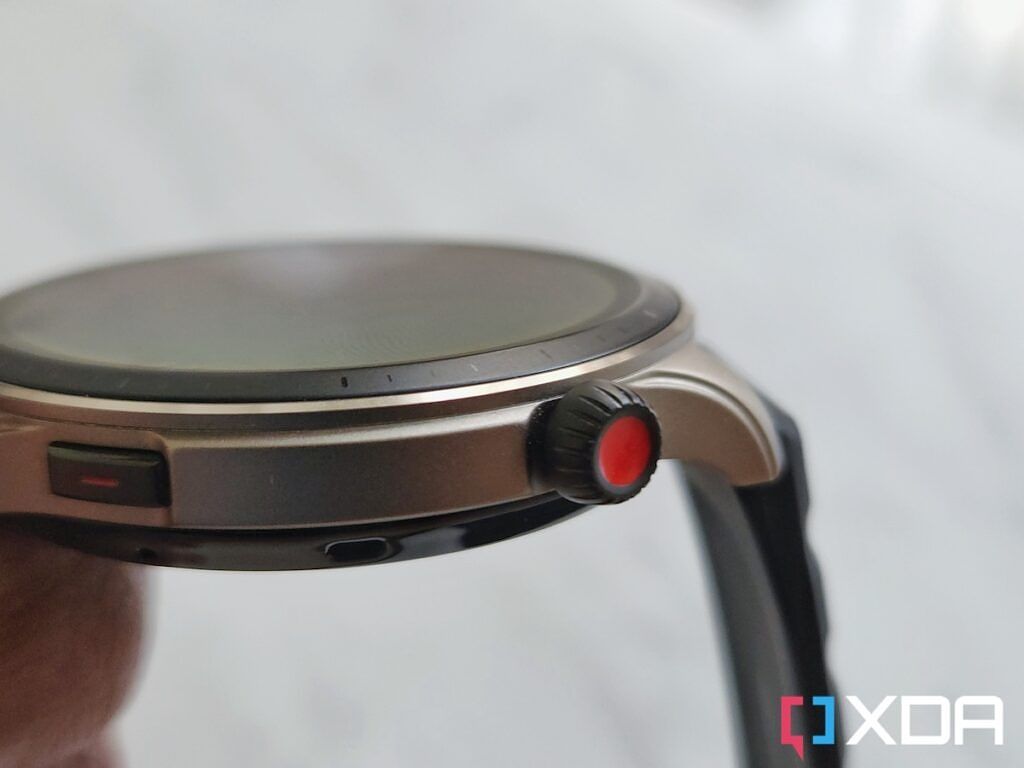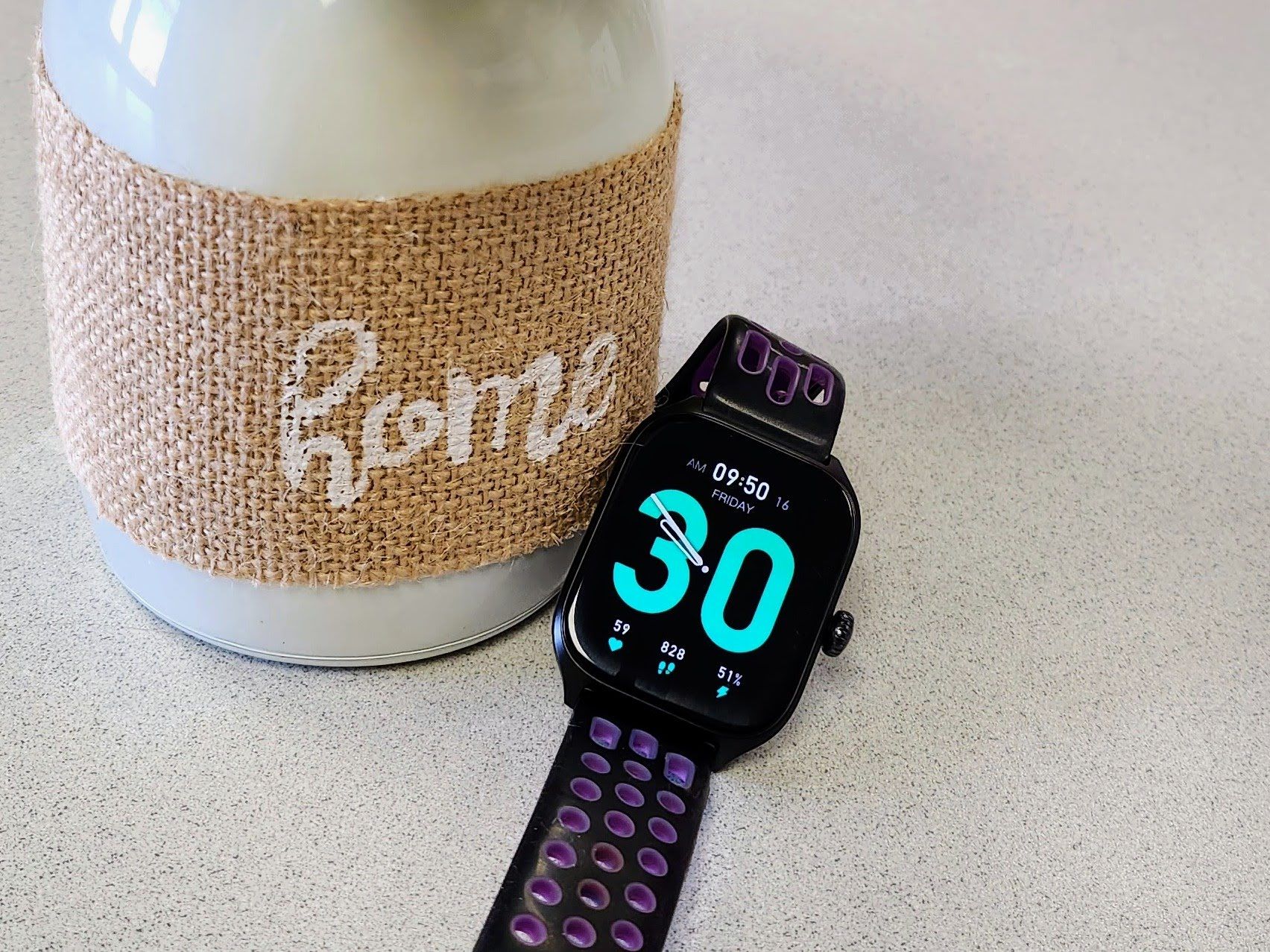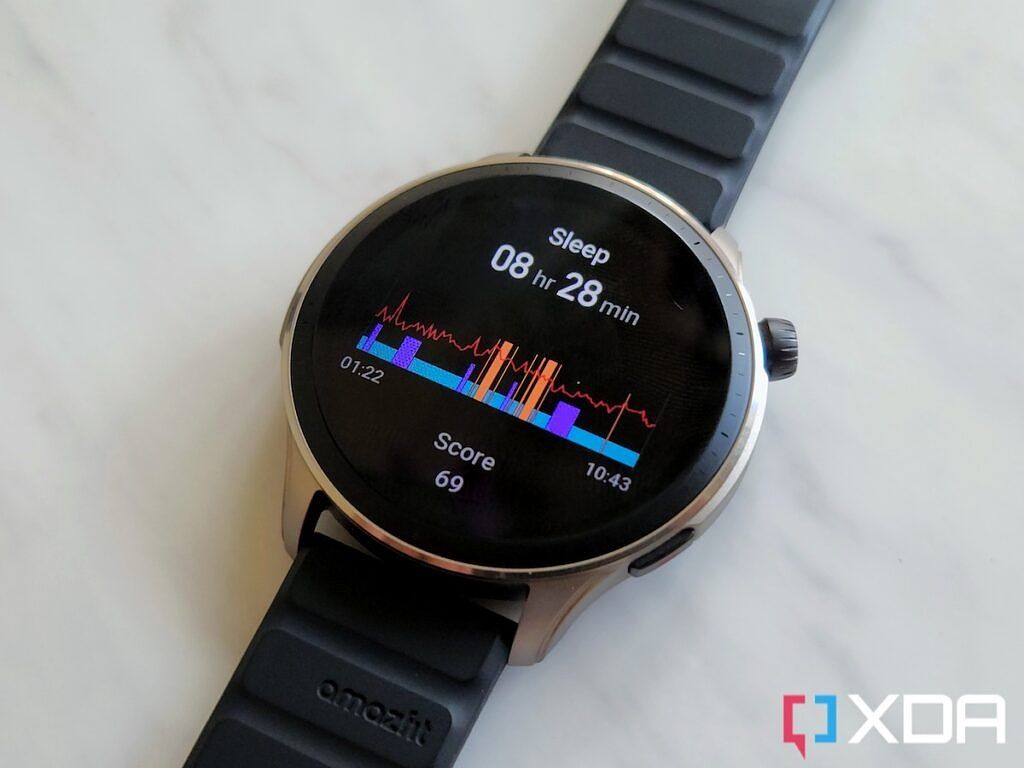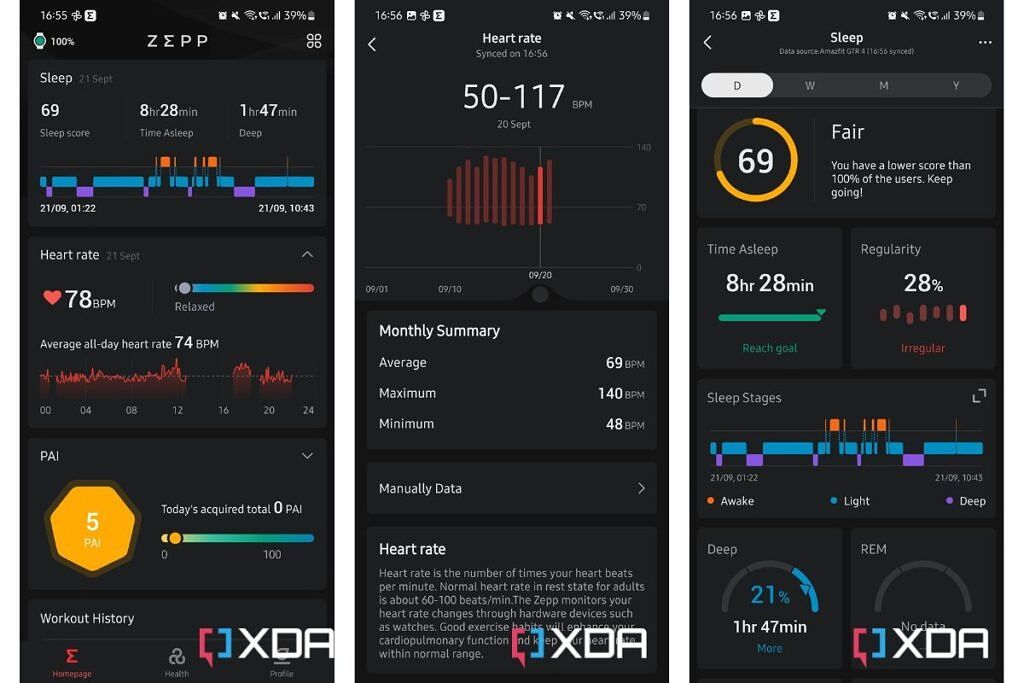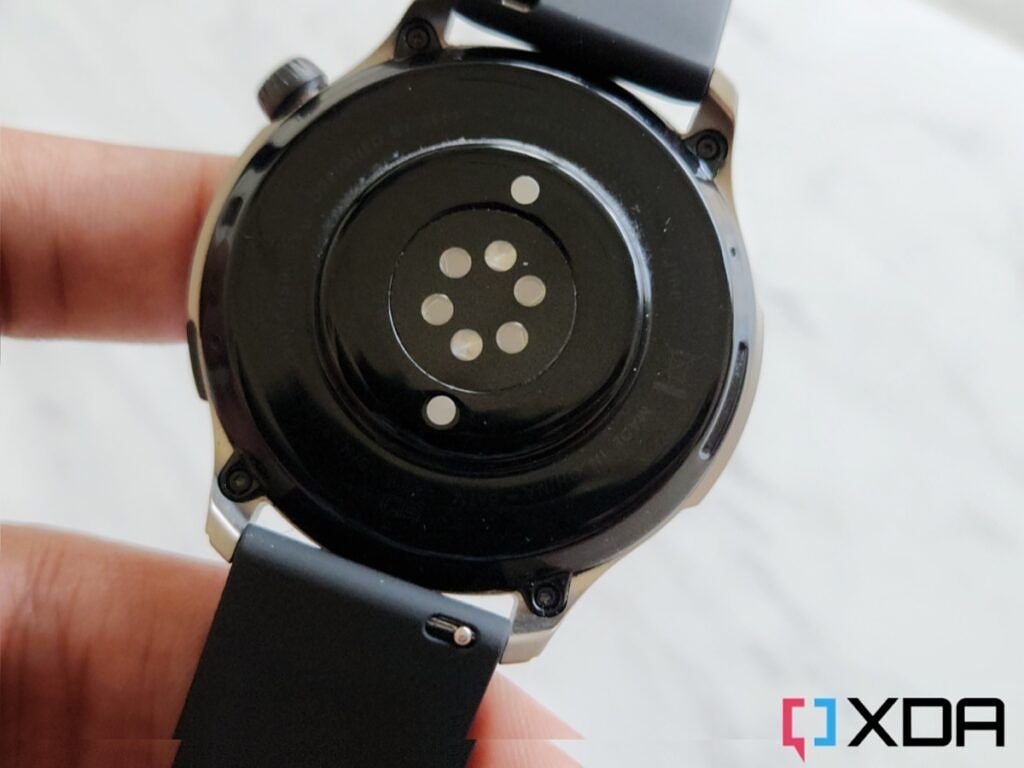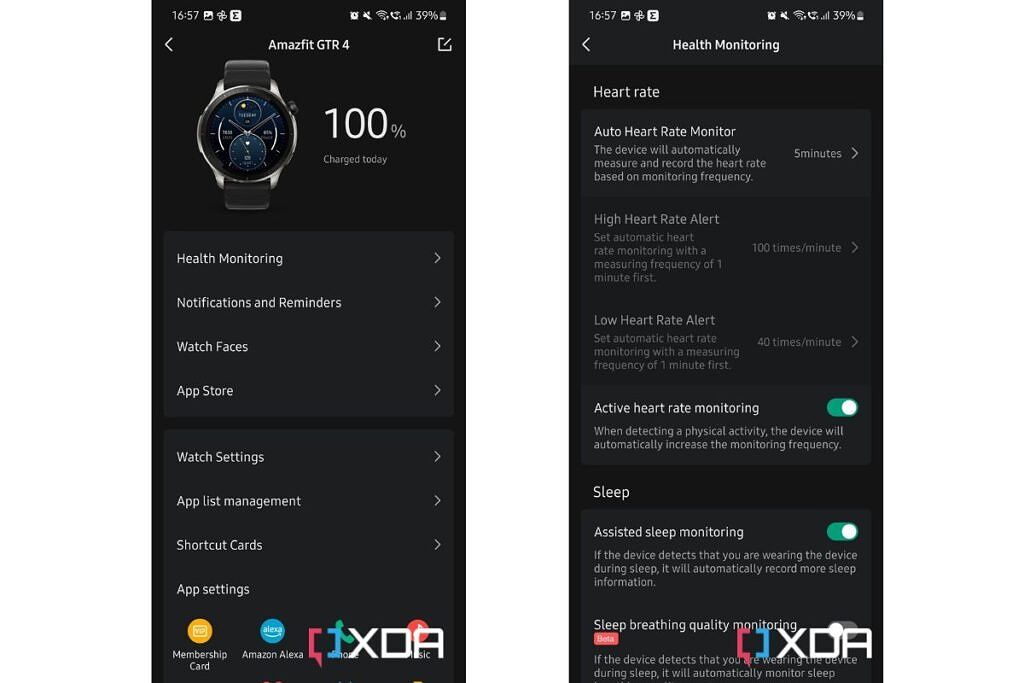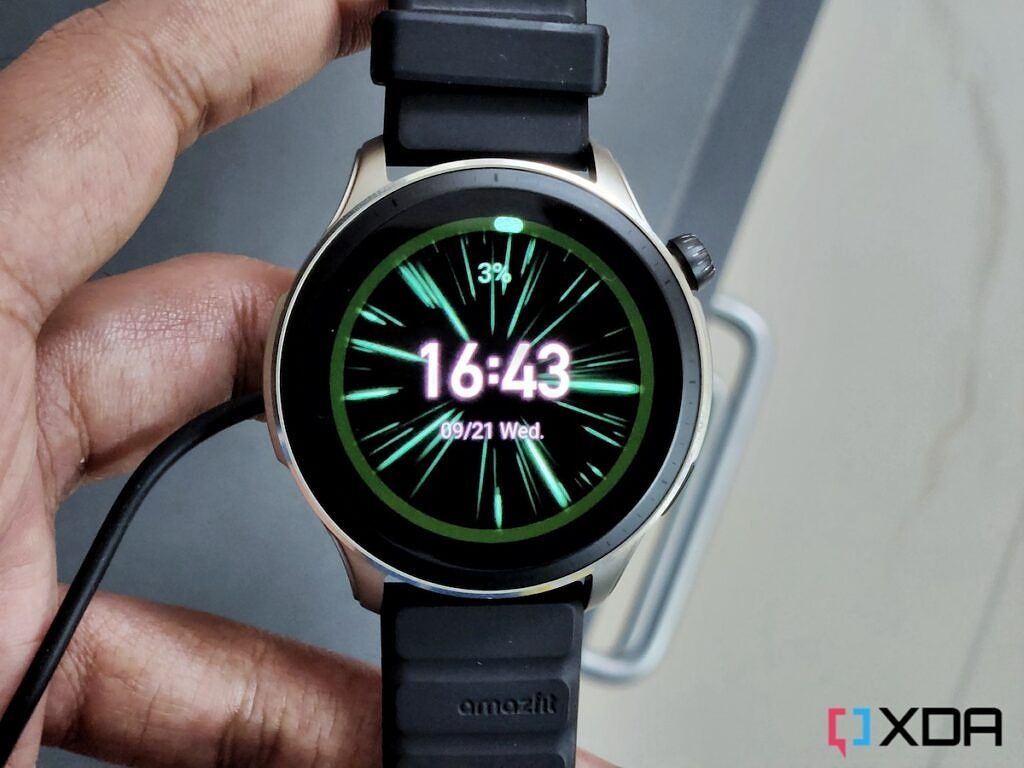For many shoppers, the choice between smartwatches comes down to two big players — Apple and Samsung. On one side, you have the Apple Watch and the Galaxy Watch making up more than half of the smartwatch market. And on the other side, there are brands like Amazfit. Granted, Amazfit hasn't had a flawless run in the past, but their last few smartwatches have been great, particularly for the price. The company's new Amazfit GTR 4 — which I've spent several days with — is no exception. It's a great alternative to some of the best smartwatches out there, and it is a great watch that puts this brand under the spotlight.
The Amazfit GTR 4 does lack proper app support and doesn't let you interact well with incoming notifications. However, it makes up for those shortcomings with a fantastic design, good battery life, and reliable activity tracking. You also get some other thoughtful additions like the ability to make and receive calls directly on the watch, Alexa support, and more. And all of this is done at a price that doesn't break the bank. If all those features sound convincing, then I suggest you continue reading because I've got a lot more details for you in this GTR 4 review. Let's dive in!
Navigate this review:
- Pricing and availability
- Specifications
- Design and display
- Software and activity tracking
- Battery life
- Should you buy it?
Amazfit GTR 4: Pricing and Availability
The Amazfit GTR 4 is now available in the US for $200, making it cheaper than the latest offerings from Apple and Samsung. There are some solid alternatives to the Amazfit GTR 4 in this price range in the US, but we'll get to those towards the end of this review. The GTR 4 is also available to purchase in Asian markets, including in India, where it's available for just ₹16,999 (~$201). That makes it significantly cheaper than the top-of-the-line Galaxies and the Apple Watches in that particular market.
Specifications
Here's a quick look at the specifications of the Amazfit GTR 4 smartwatch:
Specification | Amazfit GTR 4 |
|---|---|
Build |
|
Dimensions & Weight |
|
Display |
|
Sensors |
|
Supported platforms |
|
Battery & Charging |
|
Application | Zepp app |
Other Features |
|
About this review: Amazfit loaned me this GTR 4 sample unit for testing. This review was written after spending about two weeks with the watch. Amazfit did not have any input in this review.
Design and Display
- The Amazfit GTR 4 has a beautiful design that gives it a premium look and feel.
- It sports a responsive and crisp-looking AMOLED panel on the front. It also supports an always-on display.
- If you prefer a rectangular watch instead of round, the Amazfit GTS 4 is the same watch only in a different shape and slight smaller battery.
The Amazfit GTR 4 hardware is excellent. It both looks and feels like it's built to compete with more expensive smartwatches on the market. It also has a thin and lightweight body, making it more comfortable to wear than the Amazfit T-Rex 2, which I reviewed not too long ago. Sadly, I can't say the same about the comfort of the included rubber band, though. It started to feel uncomfortable on my wrist within a day or two. Now I just remove the watch every few hours and let my skin breathe before putting it back on. I noticed that it was also quick to pick up sweat marks, so you may have to clean it quite often.
The Amazfit GTR 4 hardware is excellent.
This wasn't the case with the bands that came with the Amazfit T-Rex 2, so it could very well be an issue with my unit this time. Thankfully, the bands are easily changeable via the standard watch spring bar mechanism with which you can attach any 22mm watch bands you like. The back of the watch is where all your sensors rest. There are quite a few of them on this smartwatch, so there's a slight bulge to go with the sensors and the two tiny metal contacts for charging. A button on the side and an Apple Watch-Esque digital crown help you navigate the UI with subtle haptic feedback.
The body of the GTR 4 is made out of an aluminum alloy, and it gives it a very premium fit and finish. The watch is available in two finishes, both of which look better than the last-gen GTR 3 smartwatch. As for durability, the Amazfit GTR 4 comes with a 5 ATM water-resistant rating. There's also tempered glass on top of the display which is holding quite well.
The display on the GTR 4 makes it feel like you're using a high-end watch.
The face of the watch has an AMOLED panel which looks pretty great. In fact, the display on this watch is one of those things that makes it feel like you're using a high-end device. It displays crisp visuals, and it's just as responsive as many other premium smartwatches I've used in the past. It also gets bright enough to be used outdoors under direct sunlight, which is something you'd appreciate if you spend a lot of time outdoors.
The GTR 4 also supports the always-on display feature that shows the time and some other watch complications while keeping the rest of the display dark. Turning this feature on triggers a battery drain warning, but more on that topic in the sections below. What I like most about the watch is how responsive and accurate its raise to wake feature is. It's an underrated feature that just feels right when it works well. I've only seen it work reliably on some premium smartwatches, but the GTR 4 gets it right.
Are round watches not your thing? Amazfit has you covered there, too, with the rectangular GTS 4. The style here is very reminiscent of the Apple Watch, especially in the Infinite Black colorway. With the GTS 4, you get the same set of sensors, exercise tracking, and software. But the battery size, and battery life, take a dip with the capacity at 300mAh instead of the 475mAh found in the GTR 4. Should this be more of your style, then you can pick it up for the same $199.99 at Amazon.
Software and tracking features
- The Amazfit GTR 4 runs Zepp OS and connects to the Zepp app on Android and iOS.
- The Zepp OS offers a lot of features but it comes with very limited app support.
- The GTR 4 can track a lot of activities and health metrics, including heart rate, sleep, stress, and blood oxygen levels.
The Amazfit GTR 4 runs the company's own 'Zepp OS 2.0' rather than Google's Wear OS. I got a taste of this particular OS while using the T-Rex 2, and it's very basic but functional. What I love the most about Zepp OS is how delightfully simple it is to use. You'll get used to this software in no time if you're coming from a different smartwatch.
What I love the most about Zepp OS is how delightfully simple it is to use.
It doesn't have all the bells and whistles that you'd get with other Wear OS options, but it offers a lot of useful features and handles the basic tasks well enough not to make you seek an alternative. The watch connects and syncs with your smartphone via the 'Zepp' app. This particular application likes both iPhones and Android phones equally, meaning you're not going to miss out on any features for picking sides. The GTR 4 had no issues connecting to my Galaxy S22 and the iPhone 12 during my time with it.
The Amazfit GTR 4 likes both iPhones and Android phones equally.
The connected app lets you select which applications can send notifications to your watch. All notifications were mirrored to my watch almost instantly, and I faced no connectivity issues throughout my usage either. The watch doesn't give you a lot of options to interact with the notifications, though. And that, in my opinion, is one of the bigger downsides of Zepp OS. Replies to messages, for instance, rely on preset messages, which is not intuitive.
There's no way to type or dictate custom responses, which is very inconvenient. I always find myself simply hitting the 'Delete' button to clear the notifications or reaching out to my phone to respond. This is one of my biggest gripes with the T-Rex 2 smartwatch too, and sadly it's no different here. Similarly, the app selection is once again rather bleak on the Zepp OS. The lack of Google support really shows here, as you only get a thin selection of apps to install and use on your smartwatch. Zepp OS offers all the basic apps to get the job done, but it's a clear step down for power users due to the weak app support.
Zepp OS offers all the basic apps to get the job done, but it's a clear step down for power users due to weak app support.
Some other noteworthy features of the GTR 4 include support for Alexa and Bluetooth calling, both of which I didn't use all that much throughout my usage. It's worth mentioning that the Bluetooth calling feature uses the watch's built-in speakers, so you can't really make or receive calls in public unless you're comfortable with that. The GTR 4 cannot connect to Bluetooth earbuds when we tried to pair some to it.
The Amazfit GTR 4 comes with support for more than 150 activities which makes it on par with a lot of fitness trackers out there. If you are the type of person who likes to work out and track your activities, then the GTR 4 will definitely keep up with your needs. Additionally, the watch can also keep tabs on other metrics like sleep, heart rate, blood oxygen, and stress levels. Amazfit is using a BioTracker 4.0 PPG Biometric sensor on the GTR 4, which is better than the one used on the T-Rex 2.
The step tracking itself was largely accurate for the most part, and I didn't notice any ghost steps being recorded. The watch can also detect activity and start logging it as a workout. It gives you an alert with a timer before recording it as a workout just to give you that control to deny if it ends up detecting by mistake or marking it as something else.
What I didn't find that reliable, however, is its ability to log how many times I stood up during the day. This can quickly become annoying, too, because it keeps sending notifications asking you to stand during the day when you just did. The key to making this work properly is to stand up and actually walk around for a bit to let the watch detect an activity.
The companion app on your smartphone acts as a hub that lets you access all the data. Navigating around this app is just as easy as doing it on the watch. The app itself has a pretty clean UI, giving you a detailed breakdown of each activity and health metric that is being tracked. You can also use the app to tweak your watch settings, download new apps, change your watch face, and more. And for those that care, Amazfit also lets you sync workout data with apps such as Adidas Running and Strava.
Battery life
- The GTR 4 has a 475mAh battery that can easily last you for around two weeks on a single charge.
- The battery takes 1 hour and 45 minutes to charge using the included magnetic charger fully.
The Amazfit GTR 4 packs a 475mAh battery inside its chassis, which lasts me for about ten days on a single charge. It's not quite the 14-day battery life that Amazfit promised me with the watch, but I have to admit that I've also been using it quite heavily. I've set the GTR 4 to record my heart rate and stress levels every five minutes. Additionally, I've enabled high/low heart rate warnings, assisted sleep monitoring, and stress relief reminders. And as I mentioned previously, I am also the GTR 4's always-on display feature, which is perhaps the biggest catalyst for battery drain.
The fact that the GTR 4 is dropping only around 10 percent battery every day with all these features enabled is quite commendable. The T-Rex 2 definitely had better battery life, but the GTR 4 is relatively thinner and is a more traditional-looking watch. It also lasts longer than any other Galaxy Watch or the Apple Watch out there, which is a huge advantage in my books. Not having to charge the GTR 4 every day makes you start thinking of it as a regular watch that you never have to charge. It's great. It takes about 1 hour and 45 minutes to charge it when it's dead fully. That's not really a lot of time to devote to something that you only have to do maybe twice or thrice a month. Not to mention, you can always get more usage out of it if you don't use it as heavily as I do.
Should you buy the Amazfit GTR 4?
The Amazfit GTR 4 gets a lot of things right, especially for its asking price, which makes it cheaper than the top dogs in the market. It's a no-brainer for those who are on a strict budget and want a smartwatch that they don't have to charge every day. It may not offer all the bells and whistles like the Galaxy Watch 5 and the Apple Watch Series 8, but the GTR 4 does enough to keep you active and monitor the important metrics, including blood oxygen, sleep, heart rate, and more.
The lack of Google support and a good family of applications may stick out like a sore thumb to advanced users. Still, Amazfit has managed to make the GTR 4 last longer between the charges by focusing on the core smartwatch features and basic functionalities. I see this working well for those who only need a smartwatch for passive use cases like fitness tracking and checking notifications.
You should buy the Amazfit GTR 4 if:
- You want a good-looking smartwatch without having to spend top dollars.
- You want a smartwatch that you don't have to charge every day.
- You're on a tight budget and want something that works well with both Android and iOS devices.
You shouldn't buy the Amazfit GTR 4 if:
- You want to respond and interact with incoming notifications directly on the watch.
- You want a smartwatch with a good application ecosystem.
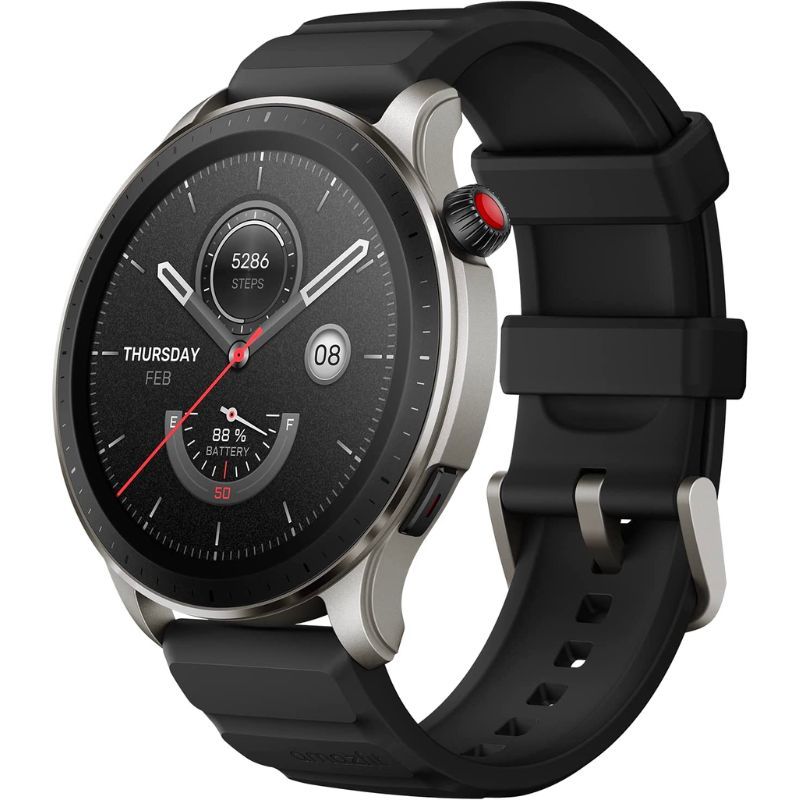
Amazfit GTR 4
The Amazfit GTR 4 gets a lot of things right for its $199 asking price in the US. It may not have all the bells and whistles, but it offers all the staples to be worthy of consideration.
Overall, I wouldn't pass the GTR 4 as an advanced smartwatch to replace the more expensive options. However, it does most of the job well enough to be worthy of consideration. The Samsung Galaxy Watch 4 is a solid alternative to consider, but it doesn't last as long as the GTR 4, and it doesn't work with iOS devices. Similarly, the Apple Watch SE is limited to just a single platform and doesn't have things like an always-on display.
Amazfit has come a long way from its early days. The GTR 4 is easily one of the best watches the brand has ever made, and it shows how its smartwatches have equally evolved through the years. These smartwatches are definitely getting better with each iteration, and I am excited to see what their next smartwatch brings to the table.

